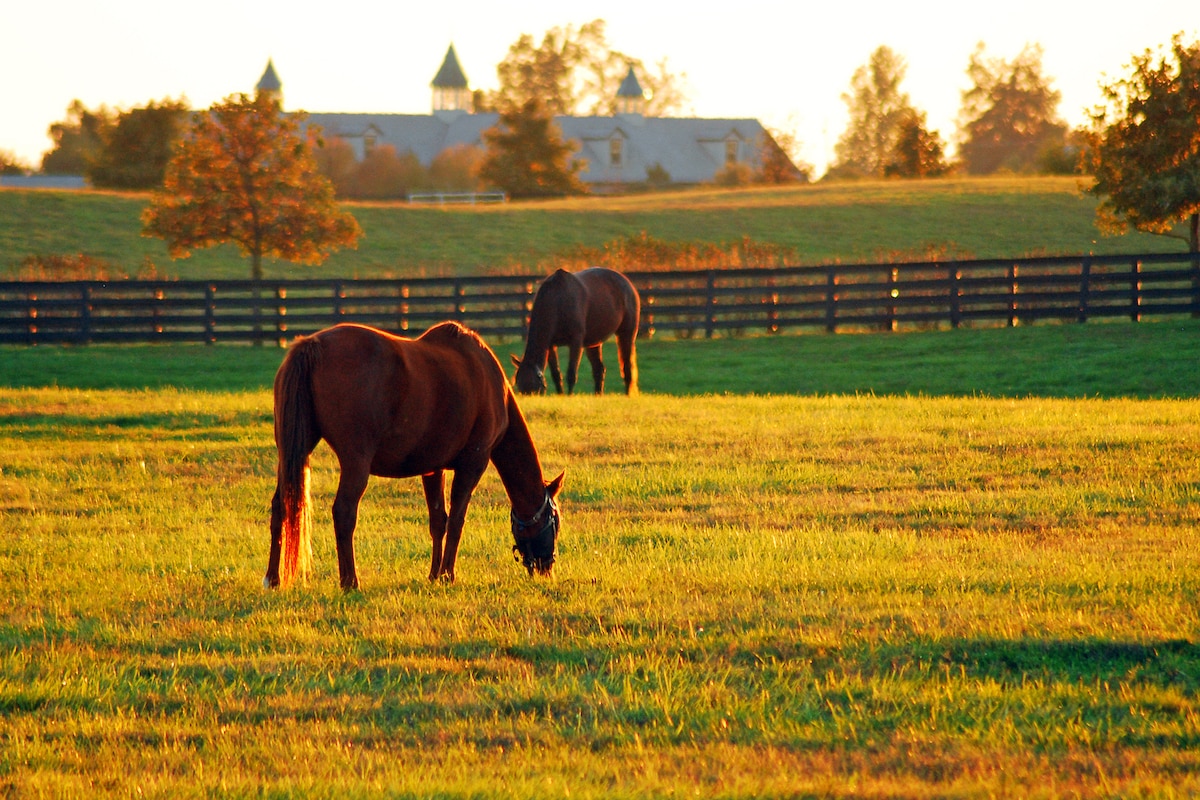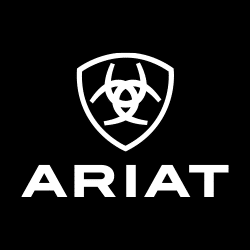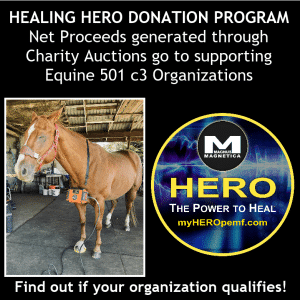How top colts establish themselves as breeding stallion prospects

The best stallions tend to get the highest-quality mares, further setting them up to have successful offspring. istock.com
On a windswept afternoon, Tapit, one of the most influential Thoroughbred sires of all time, is led out of his stall for visitors during an open house at Gainesway Farm. A hush falls over the small crowd as they admire the stallion’s statuesque presence, gleaming white coat and inquisitive eye.
Tapit currently occupies the No. 1 spot on the cumulative active North American sires list, meaning his progeny have earned the most on the track among sires currently breeding — nearly $150 million — throughout his 14-year stallion career. As of early November 2019 he had sired 25 Grade 1 winners and seven Eclipse Award champions.
Gainesway director of sales Michael Hernon, who has witnessed Tapit’s remarkable rise to stardom, says the stallion’s success is rare.
“He is so exceptional and maybe the best stallion to have come down the pike in the last 15 years,” he says of Tapit, who was North America’s leading general sire from 2014 to 2016.
So what factors contribute to stallions’ success in the breeding shed, and how do farm owners effectively manage their careers? We asked Hernon, along with Bernie Sams, stallion seasons and bloodstock manager at Claiborne Farm, which has stood such legendary stallions as Secretariat, Mr. Prospector and Unbridled, to walk us through the life of a Thoroughbred stallion, from racing career to breeding shed.
Race Record, Pedigree and Physical Attributes
While Tapit’s kinglike status might be unrealistic for every farm owner to strive for, there are certain qualities that can set a stallion up for success. Hernon and Sams agree the most important factors out of the gate are a solid race record, proven pedigree and impressive physical features.
“Today, they’ve got to be either a Grade 1 or Grade 2 winner and have had a successful racing career to really be given an opportunity (as a breeding stallion) in Kentucky,” Sams says. “They’ve got to have the pedigree to match, and they’ve got to be physically attractive, because everyone is looking for the perfect horse to breed to. They’ve really got to have all three to have a fair shot.”
Sams manages the career of Claiborne’s top sire, War Front, who is considered an international super-sire by virtue of his successful runners in both the United States and overseas on dirt, grass and synthetic surfaces.
“He had a lot of runners at 2 (years old) and some nice stakes winners at 2,” Sams says. “But what put it all together for him as a stallion was having a couple of big winners (in England) on Royal Ascot day (the biggest race day of the year in Europe). That’s really what pushed him to the top.”
Sams is referring to the 2013 victories by sons Declaration Of War in the Queen Anne Stakes and War Command in the Coventry Stakes at the Royal Meeting that caught the attention of breeders worldwide.
“He’s also smart, and he knows what he’s doing,” Sams says, referring to his professionalism in the breeding shed. “Sometimes it’s almost like he knows who he is.”
Tapit, a Grade 1 winner with an equally impressive pedigree, enjoyed a boost toward his illustrious stud career when his daughter, Stardom Bound, burst onto the scene from the first crop of horses he produced, winning a Breeders’ Cup race and an Eclipse Award.
“You can think about how pivotal that was … it vaulted him into being an impressionable juvenile sire in his first year at stud, and his capital appreciation followed when additional graded stakes winners quickly emerged,” says Hernon. “That pushed him and his fee into an exalted position.”
He adds that one of Tapit’s additional qualities is his ability to produce exceptional-looking offspring, which, in turn, bring big prices at auction.
“He has real commercial appeal with his progeny, so that too allowed for his fee to keep rising significantly, because he throws a good-looking horse like he is,” Hernon says. “But we’re in rare air here … he was blessed with a strong libido and very good fertility, and then the quality of the mares (that were bred to him) followed, and he’s also been extremely well-managed.”
Stallion Farms and Stud Fees
While race record, pedigree and physical attributes contribute greatly to a stallion’s early success, so does the stallion’s stud fee, as well as the farm at which he stands and how well he is managed.
Some stallions are owned outright, but most are owned by a group of owners called a syndicate. When a top-class stallion prospect becomes available to stand at stud, farm owners often contact clients and potential clients, expressing interest in purchasing the horse and asking them to invest in an ownership share.
In today’s market, when a racehorse owner is ready to sell breeding rights (often while the horse is still racing), he or she will contact certain stallion farms through an agent or a trainer to inform them they can submit bids. The owner typically selects the highest-bidding farm with the most lucrative ownership group behind it as the stallion’s new home. The racehorse owner might choose to maintain a stake in the ownership of the stallion, which he or she will negotiate with the farm at that time.
“In today’s world it mostly comes down to the bottom line of who has the most money to offer for the horse, depending on how much money that owner wants to retain,” Hernon says.
In return for this initial investment, each syndicate owner enjoys a share of the stallion’s yearly success. Their membership also often includes one free breeding to the stallion per year (called a stallion nomination); they can breed the mare of their choosing.
A syndicate can be broken into up to 100 shares or more, depending on the farm at which the stallion stands. The stallion farm is usually the largest shareholder (25-50% ownership), although in some cases it only keeps a few shares and sells the remaining shares to clientele.
Sams says War Front’s ownership group is concise compared to that of other stallions.
“If there are 40 shares (in War Front), there are probably 18 shareholders. It’s pretty tight, and it’s always been pretty tight,” Sams told Thoroughbred Racing Commentary in June 2019. “The shares sold anywhere from $300,000 to a couple of million dollars.”
Once a farm obtains a stallion’s breeding rights, it must decide on the horse’s initial stud fee. Several factors go into this number.
Sams says Claiborne’s goal is to make back the money they initially invested in the stallion within a three-year period.
“We try to recapture the investment by the close of business during the third year, and hopefully the horse is successful, gets winners and creates commercial demand and continuing demand for seasons going forward and becomes a viable commercial stallion,” he says.
In 2007, War Front’s first year at stud, he stood for a modest $12,500 per breeding to prove himself. His fee rose rapidly with the success of his offspring, and he now commands the highest fee in North America — $250,000 — with 21 Grade 1 winners and eight champions to his credit, including last year’s Grade 1 Preakness Stakes winner, War of Will.
Tapit’s fee also skyrocketed from a modest $15,000 when he entered stud in 2005 to $35,000, $50,000, $80,000, $100,000, $150,000 and, finally, $300,000 for four consecutive years (2015-2018). He stood for $225,000 in 2019. “For a good stallion you would see a decent increase in patronage over time, but you wouldn’t typically see this massive valuation increase and stud fee appreciation,” Hernon says.
Life as a Stallion
After a stallion settles in at a new farm and his fee is set, he adjusts to the regimen of his new duties and schedule. Depending on the farm, stallions breed one to three times per day during the breeding season (mid-February through the first week of July).
Each stallion is different, and depending on his age, libido and fertility, his schedule varies. The number of mares a stallion breeds each season is referred to as his “book.”
In September 2019 The Jockey Club board of stewards, concerned with the narrowing of the diversity of the Thoroughbred gene pool, announced its consideration of a rule to limit the annual breeding of individual stallions to 140 mares each, starting with the 2021 breeding season.
War Front’s book was recently cut back from nearly 100 mares to 82 mares during the 2018 breeding season, and he concluded the 2019 season with 81. Even though this quantity is significantly less than other stallions (some currently breed as many as 252 mares per year), the quality of the mares visiting him is at the top of the charts due to his proven success as a stallion. Tapit is in a similar situation, with his 2020 book limited to 125 top-notch mares.
This article was originally published in the Winter 2020 issue of Off-Track Thoroughbred Magazine, the only publication dedicated to the Thoroughbred ex-racehorse in second careers. Want four information-packed issues a year delivered to your door or your favorite digital device? Subscribe now!










